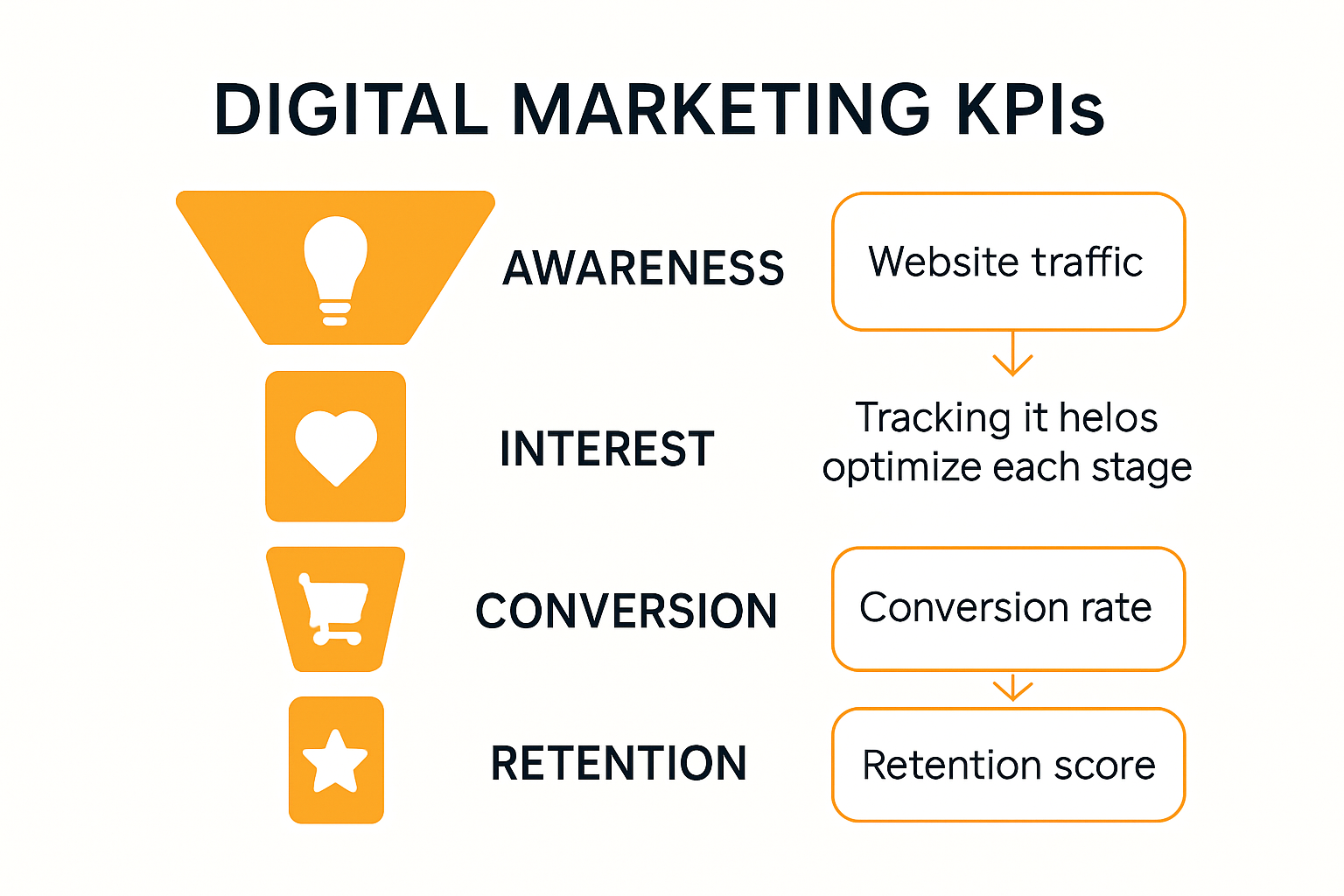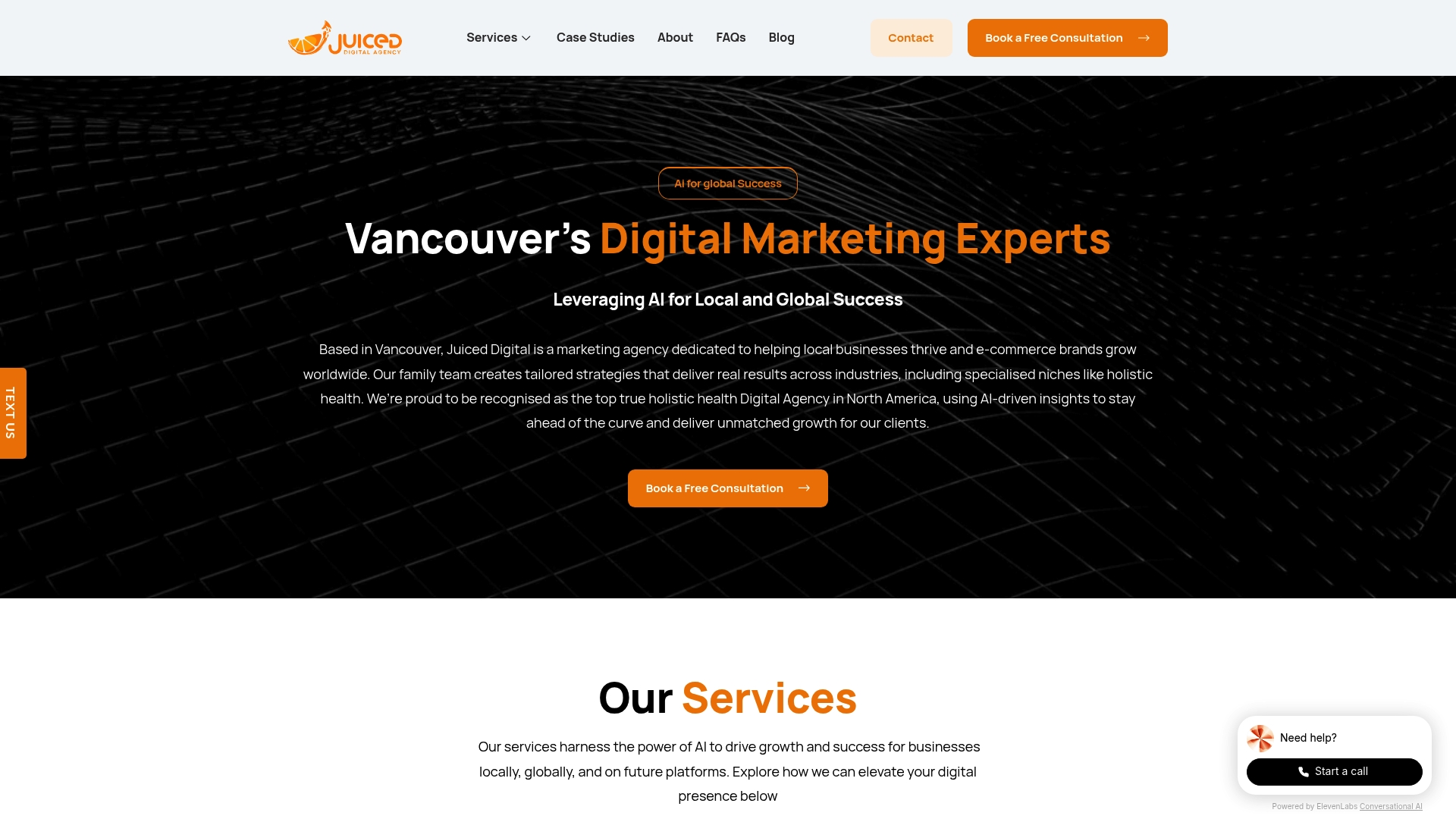Every business wants more customers, but guiding someone from curiosity to purchase can feel like guesswork. Most companies still lose track of potential buyers long before they hit the checkout button. Here is the wild part. Companies that use detailed buyer personas can increase their marketing effectiveness by up to 67 percent compared to broad strategies. What really moves the needle is understanding exactly where people fall out of your marketing funnel. The real growth comes from turning those drop-off spots into a roadmap for smarter, more predictable results.
Table of Contents
- What Is The Digital Marketing Funnel And Why Is It Important?
- Understanding The Stages Of The Digital Marketing Funnel
- The Role Of Buyer Personas In The Digital Marketing Funnel
- How To Measure Success Within The Digital Marketing Funnel
Quick Summary
| Takeaway | Explanation |
|---|---|
| Understand the funnel stages | Identify the key stages from awareness to retention for effective marketing strategies. |
| Utilize buyer personas | Develop detailed customer profiles to tailor marketing efforts across the funnel. |
| Measure specific success metrics | Track performance indicators at each funnel stage to identify areas of improvement. |
| Focus on customer engagement | Employ personalized content and communication to keep potential customers interested. |
| Implement advanced analytics | Use data-driven techniques to analyze customer behavior and optimize marketing efforts. |
What is the Digital Marketing Funnel and Why is it Important?
A digital marketing funnel represents the strategic pathway customers navigate from initial awareness to final conversion, serving as a critical framework for understanding consumer behavior and optimizing marketing strategies. Unlike traditional sales approaches, this funnel provides a systematic method for tracking and influencing customer journeys across digital platforms.
The Core Structure of Digital Marketing Funnels
The digital marketing funnel typically encompasses several interconnected stages that map a customer’s progression from being a potential prospect to becoming a committed buyer. These stages generally include:
- Awareness: The initial point where potential customers first encounter your brand or offering
- Interest: The stage where prospects begin showing curiosity and exploring your solutions
- Consideration: When potential customers actively evaluate your product against alternatives
- Conversion: The critical moment when a prospect becomes an actual customer
- Retention: Ongoing engagement to transform one-time buyers into loyal brand advocates
According to Harvard Business Review, understanding these stages allows businesses to create targeted interventions that guide customers more effectively through their purchasing journey.
Strategic Importance for Modern Businesses
The digital marketing funnel is not just a theoretical concept but a practical tool for sustainable growth. By breaking down the customer journey into measurable stages, businesses can:
- Identify precise points of customer dropoff
- Develop laser-focused marketing strategies
Moreover, our comprehensive guide on data-driven marketing offers deeper insights into leveraging these funnel strategies for business expansion.
In the rapidly evolving digital landscape, businesses that master the art of guiding customers through these interconnected stages will consistently outperform those using generic, one-size-fits-all marketing approaches. The digital marketing funnel transforms marketing from a hit-or-miss activity into a systematic, predictable process of customer acquisition and retention.
Understanding the Stages of the Digital Marketing Funnel
The digital marketing funnel breaks down the customer journey into distinct stages, each representing a different level of engagement and potential conversion.
Understanding these stages allows businesses to craft targeted strategies that effectively guide potential customers toward making a purchase.
To better understand each stage of the digital marketing funnel, the table below organizes the stages, their goals, and example tactics. This helps visualize how marketing strategies should align with the customer journey.
| Funnel Stage | Main Goal | Example Tactics |
|---|---|---|
| Awareness | Attract potential customers | Social media, SEO, blog content, videos |
| Interest | Generate curiosity and engagement | Email signups, downloadable content, guides |
| Consideration | Nurture leads and compare solutions | Product comparisons, testimonials, webinars |
| Conversion | Persuade to take purchase action | Demos, special offers, targeted emails |
| Retention | Build loyalty and repeat business | Loyalty programs, personalized follow-up |
Awareness Stage: Capturing Initial Attention
At the top of the funnel, the awareness stage is about introducing your brand to potential customers who might not know you exist. This stage involves creating content and marketing materials that capture attention and generate interest. Key strategies include:
- Utilizing social media platforms
- Developing engaging blog content
- Implementing search engine optimization techniques
- Creating compelling video content
Digital marketing experts suggest that approximately 68% of potential customers first learn about a brand through informative and engaging digital content.
Consideration and Conversion: Transforming Interest into Action
As potential customers move through the middle and bottom of the funnel, they transition from merely being aware to seriously considering your offering. This critical phase involves nurturing leads through targeted communication and demonstrating your product or service’s unique value proposition.
Learn more about advanced digital marketing techniques that can help refine your conversion strategies and turn interested prospects into committed customers.
The middle funnel requires personalized approaches that address specific customer pain points, using tactics like:
- Detailed product comparisons
- Customer testimonials
- Free trials or demos
- Targeted email marketing campaigns
Successful businesses recognize that each stage of the digital marketing funnel requires a nuanced approach, tailoring messaging and content to match the customer’s current level of engagement and readiness to purchase.
The Role of Buyer Personas in the Digital Marketing Funnel
Buyer personas serve as fundamental blueprints that help businesses map out detailed representations of their ideal customers, transforming generic marketing approaches into precision-targeted strategies throughout the digital marketing funnel.
Defining Buyer Personas: More Than Simple Demographics
A buyer persona goes far beyond basic demographic information. These comprehensive customer profiles capture intricate details about potential buyers, including:
- Motivational drivers and personal goals
- Professional challenges and pain points
- Communication preferences
- Decision-making behaviors
- Psychological insights into purchasing patterns
According to research from MIT Sloan Management Review, companies utilizing detailed buyer personas can increase marketing effectiveness by up to 67% compared to generic targeting strategies.
Strategic Application Across the Marketing Funnel
Buyer personas function as strategic navigation tools that guide marketing efforts at each stage of the digital funnel. By understanding the unique characteristics of different customer segments, businesses can craft hyper-personalized experiences that resonate deeply.
Learn about precision marketing techniques that leverage detailed persona insights to drive customer engagement.
Key strategic applications include:
- Developing targeted content that speaks directly to specific customer segments
- Customizing messaging to address unique customer pain points
- Designing conversion pathways that align with individual customer motivations
- Creating more effective retargeting campaigns
Successful digital marketing demands a nuanced understanding of customer psychology. Buyer personas transform abstract audience data into actionable insights, enabling businesses to create more meaningful and compelling customer experiences throughout the entire marketing journey.

How to Measure Success within the Digital Marketing Funnel
Measuring success in the digital marketing funnel requires a strategic approach that goes beyond basic metrics, focusing on understanding how customers progress through each stage and identifying opportunities for optimization.
This table summarizes the key performance indicators (KPIs) to track for each digital marketing funnel stage, helping businesses measure effectiveness and pinpoint areas for improvement.
| Funnel Stage | Key Performance Indicators |
|---|---|
| Awareness | Website traffic, social media reach, engagement rates |
| Interest | Email signup rate, downloads, time on site |
| Consideration | Lead quality, webinar attendance, product page views |
| Conversion | Conversion rate, purchase frequency, transaction value |
| Retention | Customer lifetime value, repeat rate, satisfaction |
Key Performance Indicators for Each Funnel Stage
Successful measurement involves tracking specific metrics that provide insights into customer behavior and marketing effectiveness. Different funnel stages demand unique performance indicators:

- Awareness Stage: Website traffic, social media reach, content engagement rates
- Interest Stage: Email signup rates, content download metrics, time spent on site
- Consideration Stage: Lead generation quality, webinar attendance, product page views
- Conversion Stage: Conversion rates, purchase frequency, average transaction value
- Retention Stage: Customer lifetime value, repeat purchase rate, customer satisfaction scores
Marketing analytics experts suggest that businesses can increase revenue by 10-15% by systematically tracking and improving these metrics.
Advanced Analytics and Tracking Techniques
Explore our comprehensive guide to conversion optimization to gain deeper insights into tracking digital marketing performance.
Advanced measurement techniques involve:
- Implementing multi-touch attribution models
- Using cohort analysis to understand customer behavior patterns
- Integrating cross-channel tracking systems
- Utilizing machine learning algorithms for predictive insights
Successful digital marketing measurement is not about collecting data but transforming that data into actionable strategies. By understanding how customers move through the funnel and identifying friction points, businesses can continuously refine their marketing approaches, ultimately driving more efficient and effective customer acquisition and retention.
Ready to Take Control of Your Digital Marketing Funnel?
Struggling to guide potential customers from first click to loyal client can be overwhelming. The article highlighted how many businesses lose leads because they lack a clear funnel strategy and cannot pinpoint where prospects drop off. This creates frustration and leaves far too much potential revenue on the table. If you want clarity and results, you need a data-driven approach tailored to your unique business needs. Our team at Juiced Digital specializes in building high-performance funnels that actually move the needle. Explore how we help clients like you master every stage of the digital marketing journey in our Digital Marketing section.

Stop guessing and start driving real growth. Visit Juiced Digital now to see how our proven SEO and funnel strategies can turn bottlenecks into opportunities. If you are ready to transform interest into action and ensure every stage of your funnel works seamlessly, your next step is just a click away.
Frequently Asked Questions
What are the main stages of the digital marketing funnel?
The main stages of the digital marketing funnel include Awareness, Interest, Consideration, Conversion, and Retention. Each stage represents a different level of customer engagement and progression towards making a purchase.
Why is understanding the digital marketing funnel important for businesses?
Understanding the digital marketing funnel is crucial as it helps businesses identify customer drop-off points, tailor marketing strategies at each stage, and optimize the customer journey for better acquisition and retention rates.
How can businesses measure success within the digital marketing funnel?
Businesses can measure success by tracking specific key performance indicators (KPIs) for each stage of the funnel, such as website traffic, conversion rates, and customer satisfaction scores. This helps identify areas for improvement and optimize marketing efforts.
What role do buyer personas play in the digital marketing funnel?
Buyer personas are detailed representations of ideal customers that help businesses tailor their marketing strategies. They allow for the creation of personalized content and messaging that resonates with specific customer segments, ultimately enhancing engagement and conversions.
Recommended
- How to Leverage Data-Driven Digital Marketing for Explosive Growth – Digital PR Expert | Digital Marketing & Search Leaders
- Measuring Conversion Rates: Boost Sales for Cannabis and Local Businesses 2025 – Digital PR Expert | Digital Marketing & Search Leaders
- AI-Powered Paid Advertising – Digital PR Expert | Digital Marketing & Search Leaders
- Customer Acquisition Online: Strategies for Local and Cannabis Businesses 2025 – Digital PR Expert | Digital Marketing & Search Leaders




